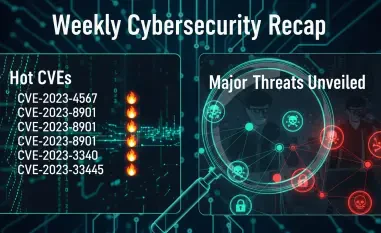What happens when a malicious program can infiltrate the deepest layers of a system, evading even the most advanced security tools, and awaken only at the command of a hidden signal? This isn’t a theoretical nightmare but the stark reality of a sophisticated GNU/Linux rootkit that has emerged as a significant challenge in cybersecurity. Discovered during a breach of critical cloud infrastructure, this malware employs cutting-edge techniques to remain undetected, raising alarms across the tech world.
The Significance of a Hidden Menace in Cybersecurity
The emergence of such advanced rootkits signals a critical shift in the cyber threat landscape, where stealth and persistence are paramount for attackers. With cloud environments and Kubernetes clusters becoming prime targets, the ability of malware to operate undetected at the kernel level poses risks to data security and operational continuity. This particular rootkit, unearthed in a high-profile Amazon Web Services compromise, underscores why traditional defenses are no longer sufficient against modern threats.
Understanding the importance of this issue requires recognizing the scale of potential damage. Reports indicate that vulnerabilities in exposed systems, such as those in automation servers, have been exploited to deploy malicious containers across multiple clusters. This not only compromises individual systems but also threatens entire networked environments, amplifying the urgency for robust, adaptive security measures.
Peeling Back the Layers of a Sophisticated Rootkit
At the heart of this rootkit’s design lies its use of extended Berkeley Packet Filter (eBPF) technology, a powerful kernel-level tool typically used for legitimate monitoring and networking tasks. By deploying a specialized “Hide” module with Tracepoint and Kretprobe programs, the malware masks its processes and network activities, intercepting system calls to conceal files and its own operations. This level of stealth renders it nearly invisible to standard detection tools, creating a formidable challenge for security teams.
Beyond eBPF, the rootkit employs a fallback mechanism when kernel configurations don’t support its primary hiding method. It alters system configurations to load a malicious shared library, hooking into common functions to obscure its presence from everyday utilities. Additionally, the malware uses a unique activation trigger involving a specific TCP packet, known as a magic packet, which opens a temporary window for attackers to issue commands, further complicating efforts to trace its activities.
This rootkit’s adaptability extends to its communication methods, supporting multiple protocols and operating in both active and passive modes. Whether directly reaching out to a command-and-control server or lying dormant until activated, its flexibility ensures persistent access for threat actors. Such sophistication was evident in its deployment via malicious container images, targeting distributed systems with alarming precision.
Voices from the Frontline: Expert Analysis
Security researchers who analyzed this rootkit have expressed concern over its technical ingenuity. One expert noted that the malware’s use of eBPF for concealment, paired with a magic packet activation system, represents a rare and dangerous evolution in malware design. This approach not only bypasses traditional security layers but also exploits legitimate system functionalities for malicious purposes, making detection extraordinarily difficult.
Further insights reveal the potential motivations behind such attacks, with financial gain appearing as a likely driver, though the identity of the perpetrators remains elusive. The complexity of the rootkit suggests a well-resourced adversary, capable of crafting tools that challenge even advanced cybersecurity frameworks. These expert observations emphasize the need for continuous innovation and collaboration to counter evolving threats.
The analysis also highlights the rootkit’s impact on real-world environments, particularly in cloud and containerized systems. By exploiting specific vulnerabilities and embedding itself through trusted platforms, the malware demonstrates a deep understanding of modern infrastructure. This perspective from seasoned professionals serves as a stark reminder of the stakes involved in securing digital ecosystems.
The Mechanics of Evasion and Activation
Delving deeper into the rootkit’s operation, its magic packet mechanism stands out as a particularly cunning feature. Upon receiving a TCP packet with a predefined window size, the malware activates a one-hour window for command reception, dynamically rerouting traffic to its designated port. This method allows attackers to bypass firewall restrictions, obscuring their activities from network monitoring tools.
Persistence is another critical aspect of its design, achieved through the creation of system services that ensure the malware remains active even after reboots. This tactic, combined with its ability to uninstall its components and restore altered files upon interruption, showcases a meticulous approach to avoiding detection. Such features make it a persistent threat in compromised environments.
The rootkit’s deployment strategy further amplifies its danger, often spreading through malicious images hosted on public repositories. Once embedded in a system, it can execute a range of commands, from running shell scripts to establishing proxy tunnels, providing attackers with extensive control. This multifaceted approach to evasion and operation marks it as a significant adversary in the cybersecurity domain.
Strategies to Combat an Invisible Enemy
Defending against such a stealthy rootkit demands a comprehensive, layered approach to security. Organizations must prioritize monitoring kernel configurations to detect and disable unnecessary eBPF capabilities that could be exploited for concealment. Regular audits of system files for unauthorized changes are also essential to catch fallback hiding mechanisms before they take root.
Network security plays a pivotal role in countering this threat, with deep packet inspection tools recommended to identify anomalous traffic patterns that might indicate magic packet activation. Setting up alerts for unusual port activity can provide early warnings of potential compromises. Moreover, securing exposed services by patching known vulnerabilities and vetting container images from trusted sources is critical to preventing initial infections.
Behavioral detection systems offer another line of defense, capable of identifying suspicious activities that evade traditional signature-based tools. By focusing on abnormal system behaviors, such as unexpected service creations, security teams can uncover hidden threats. Integrating these strategies strengthens resilience against sophisticated rootkits, protecting vital infrastructure from stealthy intrusions.
Reflecting on a Battle Fought
Looking back, the discovery of this rootkit marked a turning point in understanding the depths to which cyber threats have evolved. Its ability to hide within the kernel and activate through obscure signals revealed vulnerabilities that many systems had overlooked. The incident served as a wake-up call for organizations worldwide, prompting a reevaluation of security postures.
The response to this threat underscored the value of collaboration among researchers and industry professionals, whose insights helped illuminate the malware’s tactics. Their efforts laid the groundwork for stronger defenses, emphasizing proactive measures over reactive fixes. This collective push against an unseen enemy demonstrated the power of shared knowledge in combating digital dangers.
Moving forward, the focus shifted toward building adaptive security frameworks capable of anticipating such advanced threats. Investments in real-time monitoring, anomaly detection, and secure development practices became priorities for safeguarding critical systems. The lessons learned from this encounter continue to guide the cybersecurity community in staying one step ahead of adversaries.













